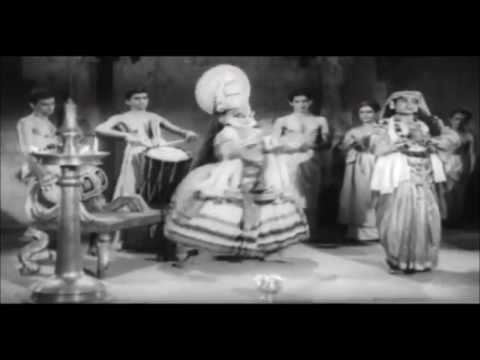Keechaka Vadham
8 /10 1 Votes
Country India | Director R. Nataraja Mudaliar | |||||||||||||||||||||||||||||||||
 | ||||||||||||||||||||||||||||||||||
Release date January 1916 | ||||||||||||||||||||||||||||||||||
Keechaka vadham an old clip
Keechaka Vadham (English: The Extermination of Keechaka), alternatively spelt as Keechaka Vatham, is an Indian silent film produced, directed, filmed and edited by R. Nataraja Mudaliar. The film is based on an episode from the Hindu epic Mahabharata focusing on the characters Kichaka and Draupadi; it stars Raju Mudaliar as Keechaka and Jeevarathnam as Draupadi.
Contents
- Keechaka vadham an old clip
- Kathakali keechaka vadham kalamandalam
- Production
- Release and legacy
- References
Keechaka Vadham was the first silent film made in South India. It was shot in five weeks at Nataraja Mudaliar's studio, India Film Company. Since the cast members were from Tamil Nadu, it was viewed as the first Tamil film. Released in the late 1910s, it became a commercially successful venture and received positive feedback from critics upon its release.
The success of Keechaka Vadham prompted Nataraja Mudaliar to make a series of similar historical films. Mudaliar's works inspired other filmmakers like Raghupathi Surya Prakasa and J. C. Daniel. Because no print of it is known to survive, this makes it a lost film.
Kathakali keechaka vadham kalamandalam
Production
Mooppanar, a wealthy landowner based in Thanjavur, had purchased a Williamson 35 mm camera and a printer in England. R. Nataraja Mudaliar, then an automobile dealer in Madras, bought the equipment from him at a price of less than ₹2,000. Nataraja Mudaliar developed a passion for moving pictures after watching the films of Dadasaheb Phalke. During the administration of Lord Curzon as Viceroy of India from 1899 to 1905, cinematographers from Britain were filming a documentary on him. Nataraja Mudaliar met Stewart Smith, one of the cinematographers who worked in the documentary, and learned about the basics of photography in film-making through him. This eventually led to Nataraja Mudaliar establishing his production house, India Film Company. He brought together some of his business associates, who invested in the production house, and established South India's first film studio in 1915 on Miller's Road, Purasawalkam, Madras.
Nataraja Mudaliar sought the advice of his friend, the theatre artist Pammal Sambandha Mudaliar, who suggested that he should depict the story of the Mahabharata characters Draupadi and Kichaka. Some of Nataraja Mudaliar's relatives objected to it as they felt that it was not a proper story for his debut venture. Nataraja Mudaliar, however, decided to proceed and launched his directorial debut titled Keechaka Vadham, which was based on an episode from the Mahabharatha. The episode follows the attempts made by Keechaka, one of the generals of King Virata, to woo and marry Draupadi. Keechaka's misbehaviour with Draupadi prompts the latter to inform Bhima about it. Bhima kills him. Nataraja Mudaliar was not a writer, so he had to take assistance from his close friend C. Rangavadivelu, a lawyer by profession. Besides writing the screenplay, Rangavadivelu agreed to coach artists on sets. Nataraja Mudaliar engaged stage actors Raju Mudaliar and Jeevarathnam to play the roles of Keechaka and Draupadi respectively. The total budget of the film was ₹35,000, which was then considered expensive.
According to historian S. Muthiah, Principal photography began in 1917, and the film was shot in a span of five weeks. Pradeep Madhavan of The Hindu Tamil says Keechaka Vadham took 37 days to complete. The entire film was shot at the India Film Company. The film's intertitles were written in English, Tamil and Hindi. The Tamil intertitles were written by Pammal Sambandha Mudaliar while the Hindi intertitles were written by Mahatma Gandhi's son Devdas Gandhi. Nataraja Mudaliar also handled the film's production, cinematography and editing. Since the cast members were predominantly Tamil people, it was considered the first Tamil film. The final length of the film reel was 6,000 ft (1,800 m).
Release and legacy
Keechaka Vadham was the first silent film made in South India. According to film historian Randor Guy, Nataraja Mudaliar established a film laboratory of his own in Bangalore to process the film negatives as there was no film laboratory in Madras. Nataraja Mudaliar believed that Bangalore's colder climate "would be kind to his exposed film stock". He processed the film negatives there each weekend and returned on Monday morning to resume the film's shooting.
According to Muthiah, Keechaka Vadham was released at the Elphinstone Theatre. He states that the film netted ₹50,000 after being screened throughout India and in Burma, Ceylon, the Federated Malay States and Singapore resulting in a yield of ₹15,000, a "tidy profit in those days." According to writer Firoze Rangoonwalla, a reviewer from The Mail rated the film's success highly by commenting "It has been prepared with great care and is drawing full houses". Guy noted that with the film's critical and commercial success, Nataraja Mudaliar had "created history". No print of it is known to survive, so it is considered a lost film.
The success of the film incited Nataraja Mudaliar to make a series of historical films such as Draupadi Vastrapaharanam (1918), Lava Kusa (1919), Shiv Leela (1919), Rukmini Satyabhama (1922) and Mahi Ravana (1923). In 1923, the death of his son in a fire which also burned his entire studio led Nataraja Mudaliar to retire from filmmaking. Nataraja Mudaliar is widely recognised as the father of Tamil cinema and his films helped in laying the foundation for the South Indian cinema industry. Nataraja Mudaliar's work inspired Raghupathi Surya Prakasa, whose father Raghupathi Venkaiah Naidu was later acknowledged as the father of Telugu cinema, and J. C. Daniel, who was later recognised as the father of Malayalam cinema.
References
Keechaka Vadham WikipediaKeechaka Vadham IMDb
